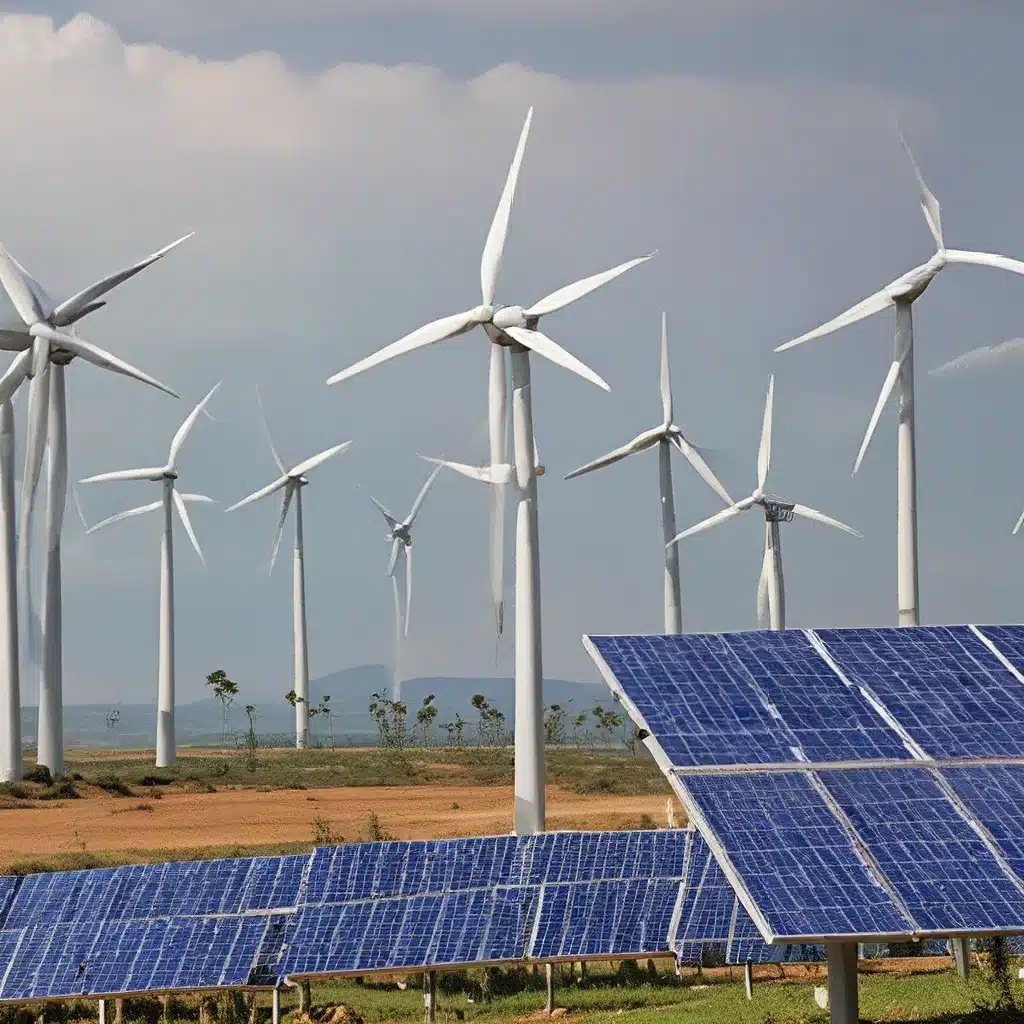
Navigating the Regulatory Landscape for Renewable Energy Success
As we strive to create a cleaner, more sustainable future, the development of renewable energy projects has become a crucial part of the equation. But navigating the complex web of regulations and guidelines can feel daunting, even for the most seasoned project managers. Fear not, my friends – I’ve got your back!
Let’s dive into the world of policy guidance for renewable energy project development. This is where the rubber meets the road, and understanding the rules of the game is key to making your project a roaring success.
Charting the Course with BOEM
The Bureau of Ocean Energy Management (BOEM) is the guiding light when it comes to renewable energy activities on the Outer Continental Shelf (OCS) of the United States. Through the Energy Policy Act of 2005, BOEM has been granted the authority to issue leases, easements, and rights-of-way for renewable energy development in these offshore waters.
BOEM’s regulatory framework is designed to ensure that these projects are developed in a safe and environmentally responsible manner. They’ve got a whole playbook of regulations, guidelines, and best practices to help you navigate the process, from planning and leasing to site assessment and construction.
BOEM’s regulatory framework lays out the four distinct phases of their renewable energy program: planning, leasing, site assessment, and construction and operations. At each stage, BOEM engages with key stakeholders, including federal agencies, state and local governments, and the public, to ensure that potential conflicts are managed effectively.
Streamlining the Leasing Process
One of the critical steps in the renewable energy development process is the leasing phase. BOEM has developed a Regulatory Roadmap to provide guidance on the requirements for acquiring an offshore wind commercial lease on the OCS. This document outlines the steps and approvals necessary to develop an OCS wind facility, helping developers understand the expectations and requirements they’ll need to meet.
BOEM also offers a wealth of application and leasing guidance materials, including information on renewable energy activities that require authorization, filing instructions for lease and grant requests, and guidelines on qualifications to acquire and hold renewable energy leases and grants on the OCS.
These resources are invaluable for developers looking to navigate the leasing process with ease and confidence.
Ensuring Workplace Safety
But it’s not just about the leasing and permitting process – workplace safety is also a critical consideration for renewable energy projects on the OCS. The Department of the Interior (DOI) has taken steps to ensure the safety and health of employees working on these offshore facilities.
In 2019, the DOI announced that it would act as the principal federal agency for the regulation and enforcement of safety and health requirements for OCS renewable energy facilities. They’ll be collaborating with the Occupational Safety and Health Administration (OSHA) and the U.S. Coast Guard to promote safety and share relevant information and training.
BOEM’s website provides more details on the DOI’s workplace safety policies and guidelines, ensuring that your team can work in a safe and secure environment.
Navigating Regional Guidelines and Data
But the regulatory landscape doesn’t stop there. BOEM has also developed a series of national and regional guidelines for renewable energy activities on the OCS. These informal documents provide additional information, interpretations, and clarifications on regulations, standards, and regional requirements.
For example, the Northeast Ocean Plan and Mid-Atlantic Regional Ocean Action Plan describe collaborative actions and best practices related to data usage, interjurisdictional coordination, and stakeholder engagement. BOEM will use these plans to inform and guide its decision-making processes in those regions.
BOEM’s website also highlights the Northeast and Mid-Atlantic Ocean Data Portals, which offer a wealth of publicly available maps and data on the marine ecosystem and human activities. These resources can be invaluable for developers looking to make informed decisions and minimize potential conflicts.
Embracing Flexibility and Adaptability
One of the key things to remember about the renewable energy regulatory landscape is that it’s constantly evolving. BOEM is committed to updating its regulations and guidelines to incorporate lessons learned and stakeholder feedback.
In fact, just last year, the Department of the Interior announced that BOEM and the Bureau of Safety and Environmental Enforcement (BSEE) had finalized updated regulations for renewable energy development on the OCS. This included a new five-year offshore wind lease schedule, with up to 12 potential lease sales through 2028.
So, as you navigate the world of renewable energy project development, be sure to stay flexible and adaptable. Keep a close eye on the latest policy updates and guidance from BOEM and other regulatory bodies, and be ready to adjust your plans and strategies as needed.
And don’t forget, if you ever feel overwhelmed or uncertain, Firewinder is here to lend a helping hand. Our team of renewable energy experts can guide you through the regulatory maze and help you create a project that’s both successful and sustainable.
So, let’s do this, my friends! Together, we can harness the power of renewable energy and build a brighter future for all.

